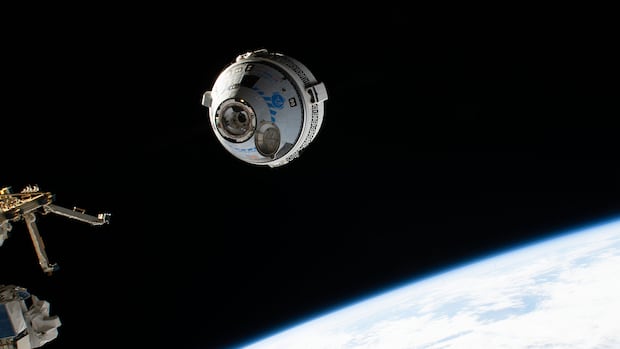It’s been a decade in the making, but Boeing’s commercial spacecraft is finally launching with its first passengers.
The final test of its crewed spacecraft, called Starliner — also referred to as its Crew Space Transportation 100 (CST-100) — is scheduled to lift off on Monday at 10:34 p.m. ET from the Kennedy Space Center in Florida on board a United Launch Alliance Atlas V rocket.
In the shiny new capsule will be two astronauts: Butch Wilmore, who will be the commander for this mission, and Suni Williams, who will be the pilot.
“It almost feels unreal,” Williams said in a question-and-answer session last week. That’s because Boeing has faced years-long delays after getting the contract from NASA in 2014 to build a new space capsule.

And when they launch, there will be a Canadian voice from mission control who will be communicating with the pair — astronaut Joshua Kutryk.
It’s an important role for him: He’s one of four crew members who are set to take the same spacecraft on its first operational mission about a year from now. It’ll be a six-month journey to the ISS and back.
“Concurrent to my duties with [this launch], I’ve been training to get ready for that expedition for about a year now,” he said.
And this isn’t his first time in mission control at Capcom (a throwback term from NASA’s earliest days that stands for capsule communication).

He’s been in the same position for SpaceX launches, but in the case of SpaceX, the company controlled the spacecraft. In Boeing’s case, control will be done from the Johnson Space Center in Houston.
“I think it’s the first time that we’re going to [once again] control … a crewed launch and re-entry from here in Houston since the space shuttle ended,” Kutryk said. “So it’s a big deal. There’s a lot of excitement for NASA. And I just feel really lucky and proud to be able to be a part of it.”
A history of delays
After NASA’s space shuttle program ended in 2011, the space agency had no other option but to use the Russian Soyuz rockets to get American and Canadian astronauts into space.
Then, in 2014, NASA announced that it had chosen two commercial companies to build spacecraft that would return launch capabilities to American soil: SpaceX and Boeing.
While SpaceX successfully began launching astronauts to the International Space Station (ISS) in 2020, Boeing has yet to do so.
In order for NASA to approve any new crew spacecraft, SpaceX and Boeing had to each conduct two critical tests: the first, an uncrewed launch and docking with the ISS; the second, a crewed launch and docking with the ISS.
SpaceX passed its two tests easily, launching its first operational mission in 2020. (It’s important to note they had already had experience launching cargo capsules to the ISS on their Falcon 9 rocket, and the crewed capsule was quite similar to the Dragon cargo.)
However, Boeing’s first uncrewed launch was unable to dock with the ISS. It launched again in 2022 and successfully docked.
No jitters
Asked if they were experiencing any jitters about the upcoming launch, Williams and Wilmore — both seasoned test pilots and astronauts who have each spent more than a year in space — said that they were feeling good.
“We’ve both been here before,” said Williams. “I don’t necessarily think it’s jitters. I’m just thinking it’s more like last-minute checks, crossing the T’s and dotting the I’s.”
They — along with Kutryk — have been working alongside Boeing during the development of Starliner. Wilmore said that for him, it’s more about focusing on the procedures and preparation.
Get the latest on CBCNews.ca, the CBC News App, and CBC News Network for breaking news and analysis.
While on board the capsule — named Calypso by Williams in honour of ocean explorer Jacques Cousteau’s vessel — the pair will be running through several checks and procedures to ensure it is ready for regular launches to the ISS.
“Everything’s not going to be absolutely perfect as we fly the spacecraft. And that’s really what our goal is. We’ve gotten to a point … that we feel very safe and comfortable how this spacecraft flies,” Williams said.
“But we’re going to find new things, and we’re going to write those things down and we’re going to relay all that and fix it for the next time the spacecraft flies.”








